Filed under: General Health, Nutrition, Training
I have some pretty cool stuff for you guys today, so check it out.
1. Elbow In-service
Eric Cressey recently filmed an amazing 32 minute in-service all about elbows that he gave to his staff. This is something I have been hoping (and encouraging) EC would do, as his in-services are top-notch and provide a ton of valuable and immediately applicable information.
He is selling this in-service video for only $9.99. Even more incredibly, half of the proceeds are going to Kevin Youkilis’s charity, Youk’s Hits for Kids, which provides for underprivileged children.
You will not only be getting a great product and increasing your knowledge; you will be supporting a great cause at the same time. Pick up a copy today.
2. Jay Robb Whey Protein Feedback.
As most of you know I have been pumping up Jay Robb’s whey protein, as I feel it is the best combination of quality, taste and price on the market. His whey comes from mostly grass-fed cows, is low-temperature processed, has no artificial sweeteners, mixes easily and tastes great without completely breaking the bank. It certainly isn’t the cheapest powder on the market, but it is far less expensive than comparables like Whey Cool or Warrior Whey.

A personal trainer who I am friendly with recently tried the Jay Robb line and is glad he did, sending me this feedback:
“I just wanted to take a minute to thank you for turning me on to the Jay Robb line. You were ABSOLUTELY right when you mentioned to me about the artificial sugar/sugar alcohols potentially causing G.I. distress. As a refresher, I was using Biotest’s Low Carb-Metabolic Drive. I loved it but after going back to it once and a while I totally see how I respond better to the Jay Robb line.”
It is really great stuff, and you can try some for yourself HERE.
3. Is Sunscreen Really Safe?
Recently the watchdog group Environmental Working Group released its recommended sunscreen list, as it reviewed the ingredient list of over 600 sunscreens. They could only recommend a little over 100 of them, as “the rest either don’t protect enough or contain hazardous ingredients that don’t belong on your skin.” Amazingly, the FDA provides hardly any oversight on the sunscreen industry, allowing them to use practically whatever chemicals they want in their products, as well as allowing them to make label claims that may not be true! Recently, with pressure from EWG, the FDA passed some new regulations, creating stricter rules for sunscreens and their marketing. In true FDA fashion though, these are far less than what was needed.
The EWG provides a massive list of recommended sunscreens that I encourage you to look through so you can avoid potentially toxic and cancer-causing compounds, especially if you have young children. The same personal trainer who provided me with the Jay Robb feedback, also mentioned to me that Dr. Joe Mercola has his own sunscreen and bug spray. Dr. Mercola can definitely be a little out there, but he is usually well ahead of the curve, and his sunscreen is free of all of the problematic compounds the EWG discusses, so that is a wonderful option right there. He has several SPF levels, though I would go with SPF 30 myself.
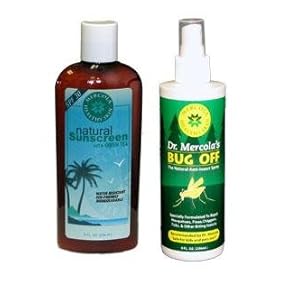
In addition his bug spray is free of DEET and …., two potentially harmful chemicals that have documented to cause problems in animals at normal usage doses. Plus he offers a combo pack with the bug spray and the sunscreen, which is sweet.
As a small disclaimer I have yet to use these products, but I will definitely be giving them a try this summer. I actually just ordered them myself.
4. The Tim Ferris YouBar
Tim Ferris is the author of the 4-Hour Workweek, and the 4-Hour Body. He is apparently also a fan of youbars, as he now has a bar he created for sale on their website – Tim Ferriss’ Training 33 Bar.
For those who don’t remember, Youbars are protein/energy bars that you design yourself that are made to order for you. They are made from real, whole foods and are absolutely fantastic. Tim’s bar contains whey protein, organic dates, almond butter, organic walnuts, organic clover honey, goji berries, organic raw cacao nibs, organic flaxseed, organic oat bran and cinnamon. This provides 190 calories per bar, with 15g of protein, 15g of carbs (3g fiber), and 10g of fat.
To top it all off, you can type in “bspbars” in the coupon code and get 10% off!
Have a great weekend everybody!
Filed under: General Health, Nutrition
Recently a friend of mine sent me a story about how KFC has been donating some of its sales to support juvenile diabetes research. I think this is a wonderful idea as it is imperative we become better at preventing and treating diabetes in children and adults.
However, KFC is making this donation in a rather hypocritical manner. KFC will donate a dollar to the Juvenile Diabetes Research Foundation every time you buy a mega jug of soda. A mega jug! That is a half-gallon of soda!

Crazily enough the JDRF defends this idea “JDRF supports research for type 1 diabetes, an autoimmune disease that results when the immune system attacks the cells in the pancreas that produce insulin, therefore requiring a child or adult with the disease to depend on insulin treatment for the rest of their lives. It is a common misconception that type 1 diabetes is caused by obesity or eating too much junk food or sweets.”
To me this is merely semantics. While it is true that sugar and diet do not contribute to the development of type 1 diabetes, it is quite clear that they DO contribute to the development of type 2 diabetes! You would think that with type 2 diabetes on the rise in children, that the JDRF would not be promoting the sale of a half-gallon of fountain soda, which provides roughly 250 grams of sugar!

Beyond that even, while it is again true that sugar intake does not cause type 1 diabetes, type 1 diabetics do have to be very aware of the amount of sugar/carbohydrates they eat to regulate their blood sugar and concomitant insulin usage. So are we really promoting a beverage with 250 grams of sugar to support type 1 diabetics?
Maybe we can drum up enough money to find better treatment for type 1 diabetics by increasing the number of type 2’s!
Does this strike anyone else as completely insane?
Filed under: General Health, Nutrition
Q. Hey Brian,
I’ve been reading your take on Paleo/anti-nutrients/phytic acid etc. And Nate Miyaki and I have been talking about this topic. It looks like you two are mostly on the same page, with maybe a few different versions of what you recommend as a general rule to the masses (obviously we all modify for individual cases).
Nate recommends (as a general rule) white rice over brown rice because the “anti-nutritents” (phytic acid in this case) are removed leaving pure amylose and amylopectin starches, which is “what we want as athletes.” I have a client that has been reading up on the white rice/brown rice – which is better – thing. Client believes brown (like many believe) is better because it is not processed/stripped of good “things.” Nate/paleo people seem to say white is better (for those with potential problems with phytic acid). IF someone doesn’t have problems with phytic acid, do you think one is better than the other (FYI: I understand the GI is basically irrelevent if people eat protein/veggies with their carb).
Nate also said to me in an e-mail; “there is a reason that Asians eat more WHITE rice.” Then my client said, “yeah, here is the reason,” …http://drbenkim.com/node/82 Any thoughts on this?
Finally, my client also said, “Did you know that by law you have to fortify white rice with vitamin B and iron?” Any truth to this that you know of?
Thanks!
A. The white vs brown rice debate is very interesting, and not nearly as one-sided as many health enthusiasts might believe. While brown may have slightly more fiber and have slightly less of an impact on blood sugar, the differences are so minute as to be more or less irrelevant.
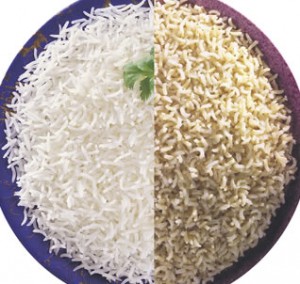
In addition brown rice is also rich in phytic acid. In my opinion it is not a matter of whether or not you have a problem with phytic acid, it is whether or not the greater amount of nutrients in brown rice are actually off-set by its phytic acid content. For those who don’t remember, phytic acid binds to important minerals and prevents their absorption.
In fact here are two interesting studies that Alan Aragon posted years ago on a forum that may help answer this question (it took me forever to dig these up!):
Comparison of the nutritional value between brown rice and white rice
Callegaro Mda D, Tirapegui J. Arq Gastroenterol. 1996 Oct-Dec;33(4):225-31.
Cereals are considered an important source of nutrients both in human and animal nourishment. In this paper nutritional value of brown rice is compared to that of white rice in relation to nutrients. Results show that despite higher nutrients contents of brown rice compared to white rice, experimental data does not provide evidence that the brown rice diet is better than the diet based on white rice. Possible antinutritional factors present in brown rice have adverse effects on bioavailability of this cereal nutrients.
http://www.ncbi.nlm.nih.gov/pubmed/9…ubmed_RVDocSum
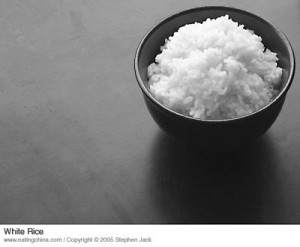
Effects of brown rice on apparent digestibility and balance of nutrients in young men on low protein diets
J Nutr Sci Vitaminol (Tokyo). 1987 Jun;33(3):207-18. .Miyoshi H, Okuda T, Okuda K, Koishi H.
The effect of brown rice with low protein intake was studied in five healthy young men. Feces were weighed, the digestibility of nutrients was determined, and blood tests were made. Each subject followed a diet consisting mainly of polished rice for 14 days and one consisting mainly of brown rice for 8 days. Both diets contained 0.5 g protein per kg of body weight. The brown rice diet had 3 times as much dietary fiber as the polished rice diet. On the brown rice diet, fecal weight increased, and apparent digestibility of energy, protein, and fat decreased, as did the absorption rates of Na, K, and P. The nitrogen balance was negative on both diets, but more negative on the brown rice diet. The phosphorus balance on the brown rice diet was significantly negative, but other minerals were not affected by the diet. The levels of cholesterol and minerals in the plasma were not significantly different on the polished rice diet and the brown rice diet. Comparing these results with data on standard protein intake (Miyoshi, H. et al (1986) J. Nutr. Sci. Vitaminol., 32, 581-589.), we concluded that brown rice reduced protein digestibility and nitrogen balance.
http://www.ncbi.nlm.nih.gov/pubmed/2…ubmed_RVDocSum
Interesting data for sure.
Personally, I don’t think you eat rice simply for the starch content; the vitamin and mineral content (as well as the phytonutrient content) are also important reasons as to why you eat certain foods. Would you choose white bread over sprouted grain bread simply because it has been reduced down to mostly starch? I wouldn’t.
Having said that though, I don’t think there is really much of a difference between white rice and brown. It certainly will not make or break your health or your physique.
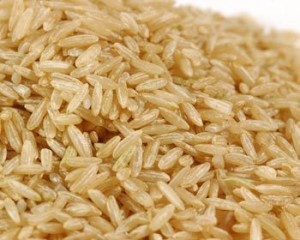
As for it being necessary to refortify refined grains, this is absolutely true. That is why if you look at the ingredients list of white bread, it will say it is fortified with x, y and z. The refinement process removes the minerals, so they are required by law to put them back in.
However what was never realized is that just because the unrefined version has a higher mineral content, that does not necessarily mean that those minerals are being absorbed in greater amounts. If these grains are not properly prepared, then absorption is not at a level that is really any higher than the amount provided by and absorbed from the refined versions. You can thank phytic acid for that.
The moral of the story is that they are pretty equal. If you like the taste of white rice and will be more compliant with a healthy lifestyle by eating it, then go for it. Same goes for brown. The differences are negligible so enjoy whichever one you prefer!
Filed under: General Health, Nutrition, Training, Weight Loss
Mike Boyle recently wrote an absolutely phenomenal article called Training is like Farming, which I am re-posting here because I think it is that good. This analogy is absolutely perfect, and it is something that I can never emphasize enough to my clients. You get out what you put in, period.
Without further ado:
I think I remember Stephen Covey in his book Seven Habits of Highly Effective People (Note from BSP – this is a fantastic book!) making reference to what I believe he called “the law of the farm.” The reference was meant to show that most of the truly good things in life take time and can’t be forced or rushed. Covey described the process of farming and alluded to how it requires patience and diligence to grow crops properly. In addition, farming requires belief in the system. The farmer must believe that all the hard work and preparation will eventually yield a long-term result.

As a strength and conditioning coach, business owner and personal trainer, the concept has always stuck with me. The process of exercising is much like farming or like planting a lawn. There are no immediate results from exercise and there are no immediate results from farming.
First, the seeds must be planted. Then fertilizer (nutrition) and water must be applied consistently. Much like fertilizer in farming, too much food can be a detriment to the exerciser. Only the correct amounts cause proper growth. Overfeeding can cause problems, as can underfeeding. As I sit and wait for my lawn to sprout or crops to grow, I feel many of the same frustrations of the new exerciser. When will I see results? How come nothing is happening? All this work and — nothing.
The key is to not quit. Have faith in the process. Continue to add water and wait. Farming and exercising are eerily similar. Continue to exercise and eat well and suddenly a friend or co-worker will say, “Have you lost weight”? Your reaction might be, “It’s about time someone noticed.” Much like the first blades of grass poking through the ground, you begin to see success. You begin to experience positive feedback. Clothes begin to fit differently.

When my friends or clients talk to me about their frustration with their initial lack of progress in an exercise program, I always bring up the farm analogy. We live in a world obsessed with quick fixes and instant results. This is why the farm analogy can be both informative and comforting.
An exercise program must be approached over a period of weeks and months, not days. The reality is that there is no quick fix, no easy way, no magic weight loss plan, no secret cellulite formula. There is only the law of the farm. You will reap what you sow. In reality, you will reap what you sow and care for. If you are consistent and diligent with both diet and exercise, you will eventually see results. However, remember, much like fertilizer and water, diet and exercise go together.
Try to grow crops or a lawn without water. No amount of effort will overcome the lack of vital nutrients.
The law of the farm.
Plant the seeds.
Feed and water properly.
Wait for results; they will happen, not in days, but in weeks and months.
To your success,
Mike Boyle
Filed under: General Health, Nutrition, Weight Loss
I hope you all had a wonderful 4th of July. It was a lovely day up here in Maine so I hope that weather shared with everyone else.
In the spirit of summer truly starting, I wanted to share some feedback with a client who contacted me in late winter to try and get lean for the summer. This was a guy who had been training for a while, and was big and strong, but had a few more lbs than he wanted.

He had dieted before and gotten results, but it was crazy strict and he could never maintain that leanness or enjoy life at the same time! So he contacted me to see if he could find a nutrition plan to achieve a more sustainable level of leanness and still be able to party with his friends down on the Jersey Shore. His goal was to lose 15-20lbs and keep it off.
We had a phone consult where we discussed my analysis of his current intake and prior dieting experience, the sad fact that he was from Jersey (kidding), as well as various other questions he had. I also sent him my nutrition packet, grocery list and finally, his personalized nutrition plan.
He contacted me a few weeks ago to share his results, and here is what he had to say:
“Brian,
I wanted to take a minute to follow up with you. Since I began the nutrition plan at the beginning of March, I have lost 18.5 lbs as of this morning(June 24)! Feeling and looking good. I’m not shredded, but I’m much, much leaner. If i had to guess, I’m between 9-10% body fat. That’s down from 14.5% according to one of those gadgets you grip.
I think I’m doing very well considering the weekends I’ve had at the Jersey Shore and the recent grad parties I’ve attended. I’m on point 80-85% of the time, and that has allowed me to live like a real person and not feel terrible about not being able to eat super clean with limited options at the Shore.”

Clearly he has made tremendous progress, and has been able to lose just over 1lb per week while not being perfect, partying on the weekends (1 night) and as he put it, living like a real person. These are real-world results, and his eating has now developed into lifestyle that he can sustain for the long haul. He has been able to make this progress through rough weekends, graduation parties and more while not depriving himself.
If your goal is to be 4% bodyfat and step on stage in a Speedo, then this plan isn’t for you. If your goal is to be healthy and fit, with an eye on your long-term health and success, then you have come to the right place.
Filed under: General Health, Nutrition
I recently came across a national campaign started by Johns Hopkins called Meatless Mondays.
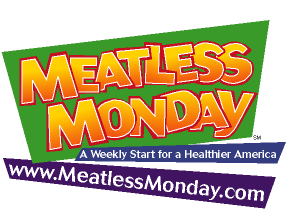
Meatless Mondays is a campaign to get people to go meat-free one day per week, preferably Mondays obviously. Every Monday places would offer a meat-less entrée to go along with the other options.
Now this doesn’t seem so bad, as many people are vegetarian or simply choose to eat less meat. I generally do not have a problem with that, as what you choose to eat is totally up to you.
However, I do have a problem with the flyer that is offered to customers about the benefits of Meatless Mondays, which in my opinion is full of vegan/vegetarian propaganda, not facts.
This flyer claims there are many health benefits to going meatless: limit cancer risk, reduce heart disease, fight diabetes, curb obesity, live longer and improve your diet. Wow, these sound fantastic, but are they true?
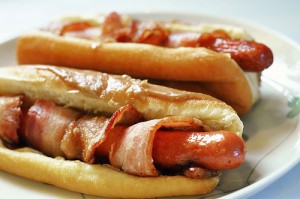
To support their cancer risk claim they state that diets high in fruits and vegetables may reduce cancer risk (which is completely true) and that both red and processed meat are associated with colon cancer. This is incredibly misleading. In reality these “associations” are poor, and in most cases when studies claim that red meat was associated with colon cancer, it is because the study did not separate out processed from unprocessed meat. So things like hot dogs, sausage, and other processed junk are being lumped in with a steak. This is a large confounder. Not to mention these studies definitely do not separate out conventionally-raised beef (raised on horrible diets, unsanitary conditions, loaded up with hormones and antibiotics, etc) from pasture-raised grass-fed beef. There is another tremendous difference. Find me a controlled dietary study where even conventional red meat causes colon cancer, let alone pasture-raised. Good luck with that.
To reduce heart disease, they recommend replacing full fat dairy and meat with vegetable oil. AHHH! Well since the association between red meat and heart disease was only ever there because researchers again did not bother to separate processed from unprocessed this is more junk advice. When researchers finally did separate the two, what did they find? No connection between unprocessed red meat and heart disease. What a surprise. And don’t even get me started on full fat dairy and heart disease, as that is even worse advice. A significant amount of research has found a decrease in heart disease risk from consuming full fat dairy!
Please explain to me how red meat consumption increases diabetes risk?

To justify claiming that eating less meat can curb obesity, they state that people on low-meat or vegetarian diets have lower body weights. This is because in general vegetarians tend to be people whose goal is to lose weight and be thin. Whether or not I eat meat has little to no bearing on my body fatness, my total intake vs my expenditure is the determinant of that.
My favorite one is that Meatless Mondays will improve your diet. They claim that consuming beans and peas will provide higher intakes of protein, zinc and iron. What?!? Seriously, where was the fact checking on that one? Really, beans and peas provide more protein, zinc and iron than meat?
This propaganda flyer goes on and on, and the worst part is there are not any references to back up their many ridiculous claims. Apparently you just have to take their word for it, even though there has never been a single documented culture thriving on a vegetarian diet. Ever.
Again, if you choose to be vegetarian or have Meatless Mondays, that is just fine. It is not the philosophy I have an issue with, as eating more produce is never a bad thing. However, don’t try to sell me on poor research that you don’t even cite and misleading propaganda to push your philosophy down my throat. At least provide some facts, that is all I ask.
Filed under: General Health, Nutrition
A CP client whom I used to train sent me an email the other day that I thought was worth sharing with you guys as it is rather enlightening.
Hey BSP,
I thought this would interest you. I was talking to a patient today and spreading the good word about pasture raised chicken and how by eating it, makes the person that much more awesome. She had told me that she was allergic to penicillin and a bunch of other things. For about 2 years, whenever she would eat “chicken,” she would get sick. For awhile, she thought it was just a bad piece of chicken and didn’t think anything of it. She finally went to to doctors and had tests among tests done to try and figure out what was wrong. Finally, they figured out that the antibiotics in the “bad” chicken, most likely the penicillin was causing her to become sick. She tried pasture raised chicken and hasn’t had a problem eating that at all.
Thought you would like to hear about that.
That is pretty gross if you ask me.
Food is about more than just the macronutrients and calories it provides, no matter how many experts try to tell you otherwise. A chicken force-fed on a factory “farm” in an enclosed barn who never sees daylight while being smashed in with 10,000 other chickens and given antibiotics to prevent its crappy diet and unsanitary living conditions from killing it, is not the same as a chicken allowed to roam freely outside, eat grubs, maggots, insects or whatever it feels like and only medicated if necessary (just like humans should be).

While the breast from each “might” provide the same amount of protein, fat and calories, they are not equal. It is important to realize that the second chicken is going to have a significantly better fatty acid profile, with more omega-3’s and less omega-6’s. It also does not come with its own dose of penicillin! Finally, it tastes better and more than likely contains higher amounts of some yet unidentified element that is better for our health.
The longer we study food and nutrition, the more nutrients and elements we discover that have benefits to our health. More often than not, these elements are maximized when the food is raised properly, and not in some horrible mass production designed to maximize the company’s profit margin. Eggs are a perfect example.
Eggs from chickens raised in the healthy manner I described have been found to have 4-6x more vitamin D, 2x more vitamin A, 4x more vitamin E, 8x more beta carotene, and 3x more omega-3 fats! I can only imagine how much more choline, lutein, zeaxanthin and other beneficial compounds pastured eggs have over their conventional brethren!
It stands to reason if these well-raised chickens are putting out much healthier eggs, they themselves will be much healthier animals. Which would you rather eat: a strong and healthy chicken that produces nutrient-rich eggs, or a weak and sickly one that requires antibiotics to keep it alive and produces nutrient-depleted eggs? The choice is yours.
Filed under: General Health, Nutrition
This was a comment on my recent blog post on sprouted grains that I thought needed to be shared with everyone as I feel it is an area wrought with confusion.
Q. Brian, I asked this in one of your previous blog posts but never got a response. These breads all have gluten added to them as an additional ingredient. I understand that sprouting grains reduces their phytic acid content, but it seems to me like gluten is a much bigger problem that phytic acid. Especially since sprouting only reduces not completely eliminates phytic acid. Moreover, in the genesis brand, with the added sunflower, pumpkin, sesame, etc. seeds, wont there be a higher omega 6 content. Seems to me you be better off going with something like corn tortillas. Food for life makes a sprouted corn tortilla that has no gluten. You haven’t mentioned their corn tortillas at all yet, but this would be the best option in my opinion. Would love to hear your thoughts.
A.Yes gluten is added as an ingredient to those breads, but it is done to help hold them together. Ever try to eat those products without toasting them? They tend to fall apart easily because many of the starches making them up are gluten-free (legumes, lentils, millett, corn, quinoa, etc). Gluten is a very sticky protein, and is the glue that holds bread together. Wheat has the highest gluten content, hence why it is so popular for bread. While gluten is added to them, overall they seem to have less gluten as they are clearly not as strong.

Read the rest of this entry »
Filed under: General Health, Nutrition
I have written rather extensively about sprouted grains and why they are significantly better than traditional whole grain bread. I have generally pointed people in the direction of Ezekiel products. While these products are fantastic, they are not the only sprouted grain products available. In fact there are two other sprouted grain lines made by Food for Life, the company that makes the Ezekiel products.

The first line is the 7 Sprouted Grains line. It contains sprouted wheat, rye, barley, oats, millet, corn, and brown rice. Since it does not contain any legumes or lentils like the Ezekiel line does, it is much more similar to “regular” whole wheat bread in terms of taste and consistency and will probably be an easier transition to sprouted grains than the Ezekiel line. The only downside is the line is smaller. It contains bread and english muffins.

A second line is the Genesis line of sprouted grains and seeds. This products contains 19 grains and seeds, including sprouted wheat, spelt, corn, barley, quinoa and more as well as organic pumpkin, sesame, sunflower, sprouted chia and sprouted flax seeds. While I have never personally tried this line, I generally like breads with seeds and bits of grain in them. I like the nutty taste and texture. This also contains only bread and english muffins.

There are other companies besides food for life. Alvarado St. Bakery also makes a lot of sprouted grain products. They make a lot of different breads, wraps, hamburger and hot dog buns and more.

The point is there are many other great sprouted grain options besides just Ezekiel products. While they are fantastic, they are not alone. Feel free to try them all!
Filed under: General Health, Nutrition
While at the hospital yesterday for my dietetic internship, I came across a brand of chips I had never seen before. While I can’t say I have been overly impressed with the food choices in the cafeteria, I do have to admit that these surprised me.
They were by a company called Food Should Taste Good, which is a pretty sweet name. Surprisingly, their chips were made from real ingredients, from a quality oil and contained plenty of fiber.

They have many different products, ranging from blue corn, to sweet potato, to the works. Rather than the usual soybean or safflower oil, which are loaded with omega-6 polyunsaturated fatty acids, they instead use a high-oleic sunflower or safflower oil. What this means is chose sunflower or safflower oil from plants that have been bred the old-fashioned to way to have a very high oleic acid content, the healthy monounsaturated fatty acid in olive oil, and a low polyunsaturated fatty acid content. This is a great thing.
The simplicity and quality of the ingredients definitely impressed me, especially for a chip. They were quite tasty too!
While I would not recommend eating chips every day, here and there, especially in the summer, they are nice to throw in with a grass-fed burger. They are a perfect summer food, so check them out!

























Posted on July 15th, 2011 by Brian St. Pierre
3 Comments »